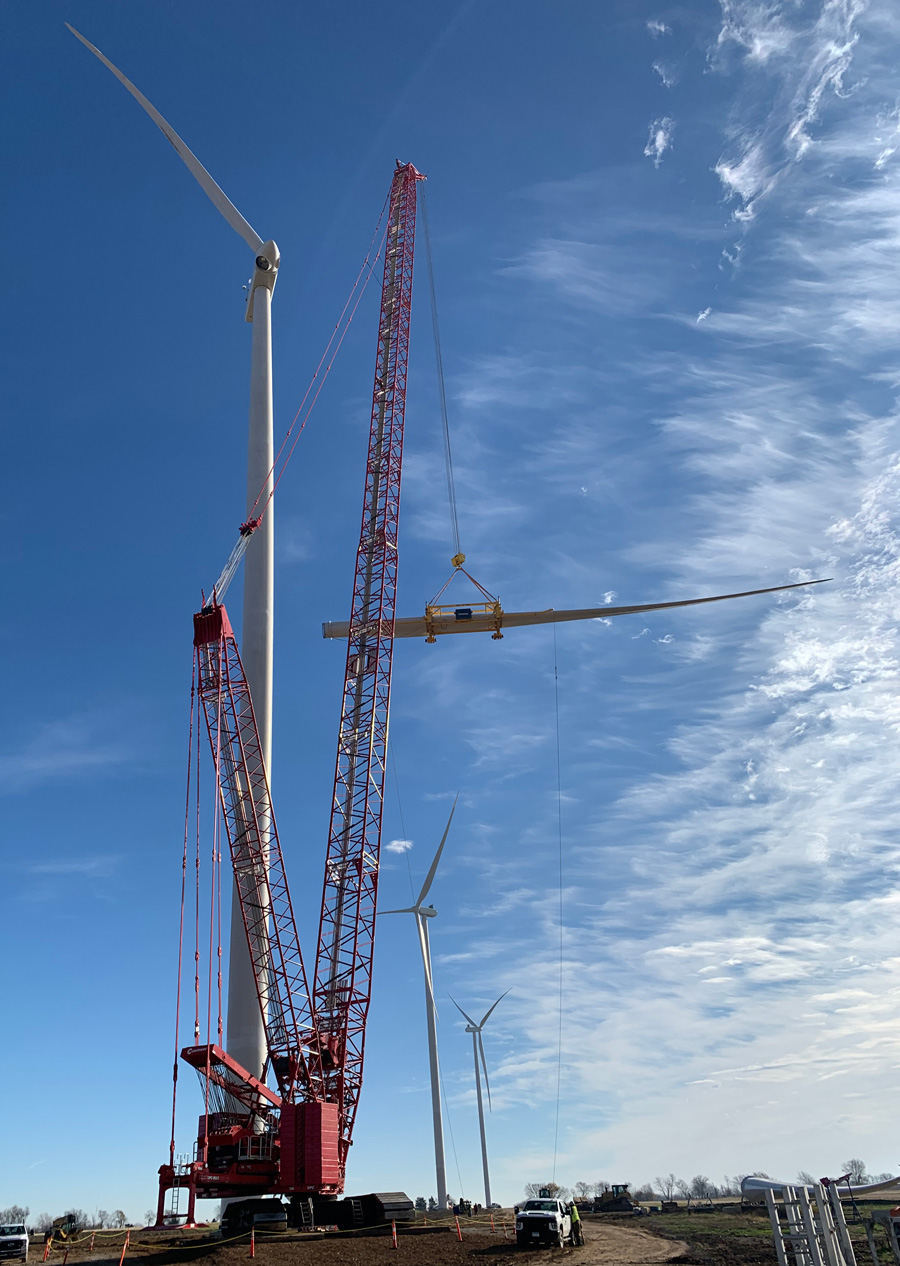Monitoring wear on site
19 January 2021Renewable energy and specialty civil construction company IEA Constructors (IEA) used four Manitowoc crawler cranes, two MLC650s and two MLC300s, for the installation of 200 turbines at a wind farm in Texas.
Configured with 331.4ft (101m) of main boom with a 24.9ft extended upper boom point (EUBP) at 28° offset, and outfitted with 661,000lbs (300t) of counterweight, the two 650t MLC650 crawler cranes helped set upper mid tower sections, spikes, blades and V120 nacelles.
Performing these lifts on each pad meant the cranes had to travel from site to site fully configured, covering distances of several miles each day. The practice causes significant undercarriage wear and is a cost consideration for contractors.
To better track damage and minimise wear in the undercarriage, Manitowoc’s Lift Solutions engineers worked with Manitowoc dealer Walter Payton Power Equipment (WPPE) to create a monitoring system tailored specifically to IEA’s needs. This enabled IEA to keep a closer eye on any wear these critical parts experienced.
“We needed a way to continually monitor these wear components without physically measuring the movement between each shaft, pin and bushing,” said Jason Ruggles, director of crane operations at IEA Equipment Management. “Out in the field our emphasis is on production, so we needed gauges that could act as a ‘go/no-go’ indicator and quickly and accurately measure component wear, giving us a visual reference of the rate of wear.”
The wear gauges were applied to all four MLC650 and MLC300 cranes. Small monitors on the cranes provided a visual display and continuously reported data to help the team evaluate wear in real time. The gauges monitored wear through the entire course of the project, during which the crawler cranes traversed a combined 600 miles.
